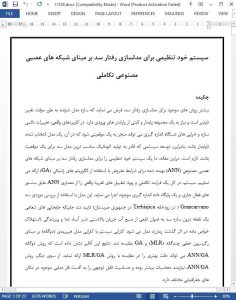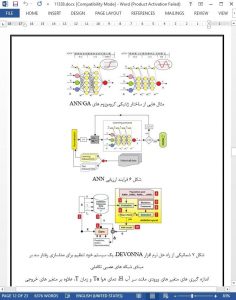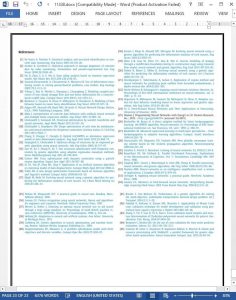Abstract
Most of the existing methods for dam behavior modeling presuppose temporal immutability of the modeled structure and require a persistent set of input parameters. In real-world applications, permanent structural changes and failures of measuring equipment can lead to a situation in which a selected model becomes unusable. Hence, the development of a system capable to automatically generate the most adequate dam model for a given situation is a necessity. In this paper, we present a self-tuning system for dam behavior modeling based on artificial neural networks (ANN) optimized for given conditions using genetic algorithms (GA). Throughout an evolutionary process, the system performs near real-time adjustment of ANN architecture according to currently active sensors and a present measurement dataset. The model was validated using the Grancarevo dam case study (at the Trebisnjica river located in the Republic of Srpska), where radial displacements of a point inside the dam structure have been modeled as a function of headwater, temperature, and ageing. The performance of the system was compared to the performance of an equivalent hybrid model based on multiple linear regression (MLR) and GA. The results of the analysis have shown that the ANN/GA hybrid can give rather better accuracy compared to the MLR/GA hybrid. On the other hand, the ANN/GA has shown higher computational demands and noticeable sensitivity to the temperature phase offset present at different geographical locations.
1. Introduction
To describe and predict the structural behavior of dams, a number of statistical, deterministic and hybrid mathematical models have been developed over the past decades. Statistical models based on multiple linear regression (MLR) and their advanced forms such as stepwise regression, robust regression, ridge regression and partial least squares regression have been shown to be more or less successful in dam modeling [1–3]. In contrast to statistical modeling, deterministic models require the solving of differential equations, for which closed form solutions could be difficult or impossible to obtain [4]. Therefore, many models that are based on numerical methods, such as the finite element method (FE), have also been developed [5]. Recently, numerical and statistical methods have been enriched with various heuristics from the artificial intelligence (AI) domain, creating hybrid models that combine their advantages.
5. Conclusion
In this paper, DEVONNA, the self-tuning software system for dam behavior modeling based on an evolving artificial neural network is presented. In order to deal with the variant set of predictor variables and the permanently increasing database of measurements in real-world problems, we developed a methodology for the generation of an ANN dam model that is optimized for given conditions using genetic algorithms. In contrast to the existing solutions, permanent variability of inputs and learning datasets require a model where most of the ANN parameters, such as the number of hidden layers, number of neurons per layer, activation function, learning algorithm and learning parameters are optimized. According to the corresponding mathematical programming model, we developed an automated system based on genetic algorithms that adapts an ANN network to fit currently active sensors and is learned using the latest historical data.











